What You Need to Know About a No Closing Costs Refinance
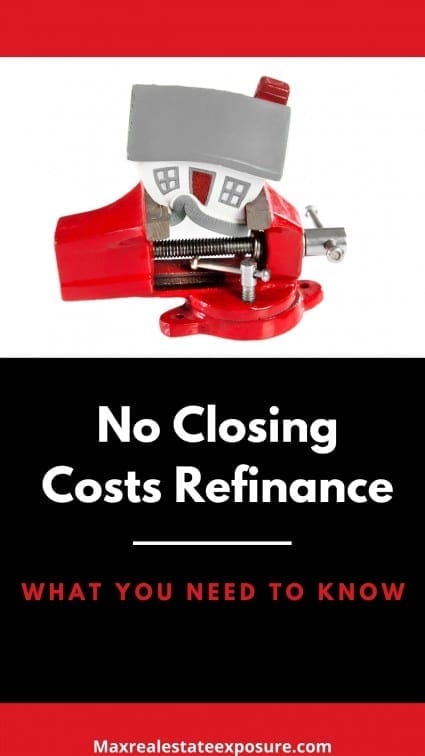 Did you know it’s possible to do no-closing costs refinance? Many people have no idea this is even possible.
Did you know it’s possible to do no-closing costs refinance? Many people have no idea this is even possible.
You can indeed refinance with no closing costs. Zero money will come out of your pocket.
A no-closing-cost mortgage refinance is very common when interest rates drop.
When buying a house, you probably didn’t give this much thought.
If you have a higher interest rate right now than the going rate, refinance will probably make sense.
Quite often, though, if you are paying closing costs, it does not make sense unless there are significant savings going from the higher interest rate to something much lower.
When you are looking to refinance your mortgage, it is easy to underestimate closing costs. Perhaps the closing costs are putting you off refinancing your mortgage.
In this situation, you can choose from a couple of no-closing-cost refinance options.
Not paying closing costs when you refinance can be a great way to save money over the life of the loan.
The beauty of a no-closing cost refinance is that you are not taking any cash out of your pocket! You will reduce your monthly mortgage payments without having any upfront closing costs that typical loans would have.
Nobody wants a higher monthly payment, so there are a few reasons why a no-points, no-closing cost mortgage refinance doesn’t make sense.
Everyone’s financial situation is different, so let’s look at what you need to understand about this type of refinancing and help find out if it is right for you.
A no-cost refinance makes a lot of sense in many circumstances.
What is a No-Cost Refinance Mortgage?
If you don’t like the closing cost on refinancing you have been quoted from your lender, other refinancing possibilities don’t require you to pay these closing costs.
No closing costs refinance loans allow you to get a mortgage with better terms without paying closing costs.
However, don’t expect this to be a cheaper option overall. The lender will still require you to pay the closing expenses. They will be added to the loan amount or covered with higher interest rates.
For example, let’s say you have a current interest rate on your home mortgage of 5%. Interest rates are now at 3.5%, with no closing costs.
Getting a new mortgage loan could greatly benefit you as you can get a lower interest rate and it won’t cost you a penny.
Staying in The Home for a Long Time Can Influence Whether No Closing Cost Refinancing Makes Sense
The most straightforward refinancing option means the lender adds closing fees to the loan amount. Your mortgage balance would increase by the amount of the closing costs, but you would be paying a much lower interest rate which would quickly pay off the closing costs.
When you compare a no-cost refinance to a closing-cost mortgage, it typically boils down to how long you plan on being in the property.
If you plan to stay long, paying closing costs usually makes more sense because you will get a lower interest rate than the no closing cost option.
On the other hand, if you only plan on staying a handful of years, the no closing costs refinance will work better financially. Again, the beauty of a no-closing-costs refinances is there are no upfront fees.
You will have a higher rate than when refinancing with closing costs, but who cares. The point is you have no out-of-pocket costs while bringing down your monthly expenditure.
When doing your refinancing, shopping for the best mortgage rate will be prudent. The lowest rate will translate into a lower monthly payment.
What Are Lender Credits?
When looking at the closing costs on a refinance, you may decide that the no closing cost refinance option is the best. You may be offered lender credits when discussing this with your mortgage lender or broker.
Lender credits allow you to roll your closing costs for the mortgage into the loan. Instead of not paying the closing costs upfront, the lender will charge you a higher interest rate when you have the loan.
How much your interest rate increases depends on how many lender credits you take. If you take more credits for your closing costs, the higher your interest rate will become.
Lender credits could allow you to make a no-point, no-closing cost loan.
Typical Refinancing Closing Costs
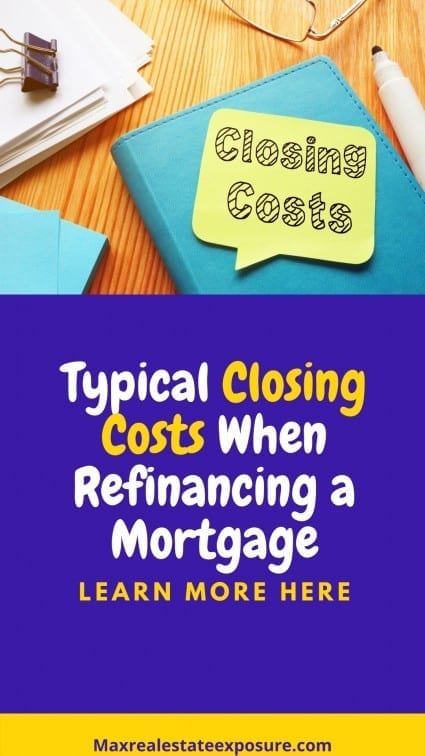 When you originally bought your home, you had to pay closing costs. You must pay many of these fees once more when you refinance.
When you originally bought your home, you had to pay closing costs. You must pay many of these fees once more when you refinance.
Despite some of these fees only being for the lender’s benefit, you, as the owner, will have to pay them.
Unless you go with a no-closing-costs refinance, these are the fees you would pay upfront.
Your lender fees could include the following items below with a closing-cost mortgage. These are all of the upfront costs you would avoid with a no-cost refinance.
Application Fees
When applying for a mortgage, some lenders will charge an application fee. You may or may not do this when getting preapproved for a mortgage.
Origination Fees and Underwriter Fees
Your lender will expect you to pay a loan origination fee to set up your loan agreement. Typically, loan origination fees are between 0.5% and 1% of the mortgage amount.
An underwriter fee is a cost associated with evaluating a borrower’s application for approval.
A lender may charge both an origination and underwriting fee. These fees are known as lender charges. All of these fees are typical of closing-cost loans.
Title Insurance
When you initially purchased your home, you would have received a document known as a deed. The deed is the official legal document showing you own the property title.
The title will show that ownership was transferred to you when you closed on the home.
The standard procedure when buying a home is to conduct a title search. The title search will be to ensure there are no clouds or encumbrances against the title. In real estate, it is referred to as having a clear title.
A title insurance policy is written in the event someone challenges your title.
When you refinance, you will need to pay title insurance once more. This will protect you should errors be made in the ownership records.
If you use the same insurance company you did previously, you might find they offer you a discount as a returning customer.
Title insurance protects you from any defects in the title, including liens, judgments, unpaid real estate tax assessments, or condo fees.
Appraisal Fees
When you refinance your mortgage, the lender wants to make sure that the value of your home hasn’t dropped substantially.
A home appraisal will need to be carried out to ensure this isn’t the case. The home appraisal fee could cost you around $500, though it could be slightly less.
The appraiser will look at numerous data points, which will be sent to the mortgage lender for their consideration.
Escrow Fees
Escrow fees are costs associated with paying either the title or escrow company for paperwork needed for the loan, including recording the deed.
See everything to know about escrow in real estate here.
Mortgage Insurance
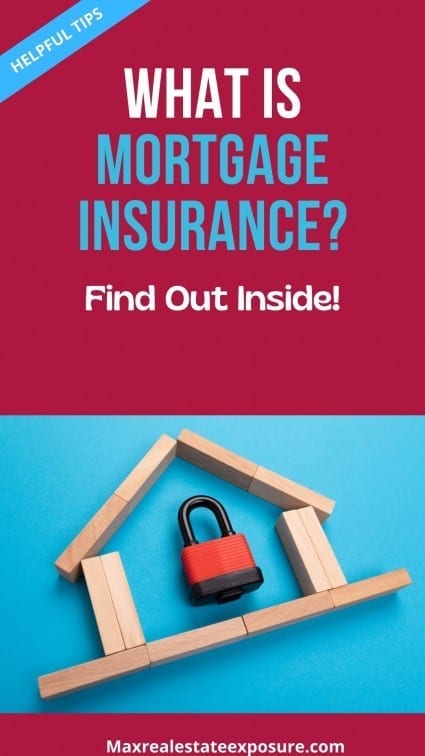 If your refinancing mortgage is part of the FHA loans program, and you’re moving from a different type of loan, you’ll pay 1.75% in fees.
If your refinancing mortgage is part of the FHA loans program, and you’re moving from a different type of loan, you’ll pay 1.75% in fees.
This is what’s referred to as an upfront mortgage insurance premium or UFMI. When switching between FHA loans, the program is called FHA Streamline, and the fee is just 0.01% of the mortgage value.
With a conventional loan, you will need to pay private mortgage insurance or PMI for short until you have 20% equity in the home. If your down payment were not substantial, you would be paying PMI for a while.
The lender might instead offer you what is known as single-pay mortgage insurance. Instead of paying monthly, this gives you the option of paying some or all of your insurance at closing so that you get a lower rate through the rest of the loan term.
When you choose an FHA loan, you will have a mortgage insurance premium (MIP). FHA lenders have these fees to protect themselves against high-risk borrowers who could default on their loans.
Mortgage insurance premiums are much like PMI – fees you wish you didn’t have to pay.
So, it is essential to understand the finance that can influence your costs.
VA Funding Fees
If you applied for your mortgage through the VA loan program, you must pay fees back to the government.
The Department of Veterans Affairs will need you to pay a percentage of the new loan you are returning to them. The amount due will depend on the type of refinancing you are using.
If you are refinancing using a VA loan after having a different type of mortgage, you can expect to pay a funding fee of 2.3%. This means that if you previously had an FHA loan or conventional mortgage and are a first-time user of a VA loan, it would cost you 2.3% in fees.
However, if you previously had a VA loan and are refinancing from a different type of loan, your fees will be 3.6% of the mortgage value.
When you are refinancing from one VA loan to another, it is known as an interest rate reduction refinance loan or IRRRL. It is also sometimes known as VA Streamline, though whatever name is given, this funding fee will be 0.5% of the loan.
Some people are exempt from paying these VA funding fees, however. Veterans receiving VA disability or surviving spouses who receive Dependency Indemnity Compensation don’t have to worry about these fees.
Also, Purple Heart recipients who are still on active duty do not have to pay these fees.
Credit Report Fees
A lender must ensure your credit score hasn’t significantly changed since you bought the home and that it meets their requirements to qualify.
These credit report fees are generally less than $50; the lender sometimes waives them. You can also get a free copy of your credit report before making your application. Doing so will let you check your credit score.
Discount Points
You can pay a fee to reduce the interest on your loan. These are sometimes known as mortgage points or prepaid interest and will mean spending 1% of the mortgage value for each point.
This optional cost will make more sense to some borrowers than others. For example, if you are refinancing a $200,000 home loan, 2 points would cost $4,000.
If that saved you $50 per month on your mortgage payments, it would take 80 months until you’re making a saving on buying the points. In this case, it would be $4,000 divided by $50 to work out the breakeven point.
If you plan to stay in the home for that time and longer, paying this extra fee will save you money in the long run. But it isn’t worth the expense if you don’t expect to stay in the home that long,
The above expenses are all standard fees associated with getting a mortgage, whether a refinance or a first mortgage. The lender will provide you with a loan estimate that will give a breakdown of these settlement costs.
Choosing Which No Closing Cost Refinance Option is Right For You
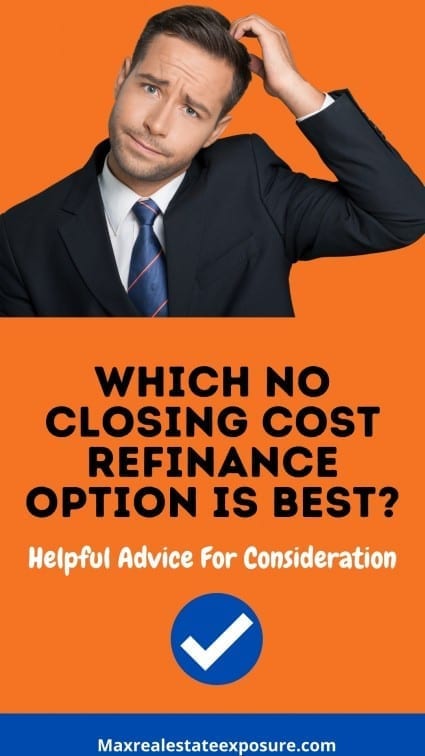 While you can choose between paying more interest or adding to the mortgage balance when getting a no-closing-costs to refinance, not every lender will have both options.
While you can choose between paying more interest or adding to the mortgage balance when getting a no-closing-costs to refinance, not every lender will have both options.
Check with your lender to ensure they have the financing you want.
Whether you pick increased interest on your loan or add to the mortgage amount will depend on the terms of your loan.
It would be best to calculate your situation and the best option.
Average closing costs can add up to a lot of money. If you stay in the home for a short period, the no-closing-cost mortgage is the best option.
When you want to do a project or addition to your home, doing a no-cost loan might make more sense than taking out a home equity loan.
You’ll get a low rate with a total loan amount rather than having a separate mortgage.
Remember that if you switch lenders, they will require you to maintain your homeowner’s insurance. Your property taxes might also need to be escrowed by the lender.
If you have been paying on yours directly, ensure the new lender has this option.
Increasing Your Interest
If you want a no-cost refinance, you could pay more in interest instead. This isn’t added to the loan amount, but it does mean that you could pay a lot more money to the lender during the mortgage.
For example, if you refinanced a $200,000 home loan over a 15-year term at a rate of 3.5%, you would pay around $57,400 in interest. Closing costs are typically between 3% and 6% of the loan, or in this case, between $6,000 and $12,000.
If the lender offers you a mortgage with 4% interest instead of paying closing costs, you will pay $66,220 in interest. This difference is $8,820 and would seem to be a pretty good value compared to likely closing costs.
However, if the lender offers a fixed interest rate of 4.2%, you’ll pay $70,000 in interest, a difference of $12,600. This is more expensive than the top end of typical closing costs, making it better to find another option if you want to save.
As you can see, increases in the interest rate can make a big difference to the amount you have to pay for your mortgage. Ensure you understand how much your no-cost refinance will cost you.
Increasing The Loan Amount
If your closing costs are added to the amount of money you borrow from the lender, you will spend more each month to pay that back.
When refinancing a $200,000 loan, let’s say your closing costs are $9,000, meaning refinancing for $209,000.
Over a 15-year term with a 3.5% interest rate, you would pay $1,430 monthly for the $200,000 loan and $1,494 monthly for $209,000. A difference of $64 per month, but $11,520 over the 15-year term, or $2,520 more than the closing cost.
Before you decide to increase the amount you borrow, you need to afford the monthly payments.
When refinancing, the size of the loan and the life of your loan can change depending on what you desire them to be.
Your new loan amount could reflect some plans you have to improve the property. You might need additional funds to be included in your refinance. In this case, your principal loan amount would be bumped up.
The Advantages of No-Closing-Cost Refinance
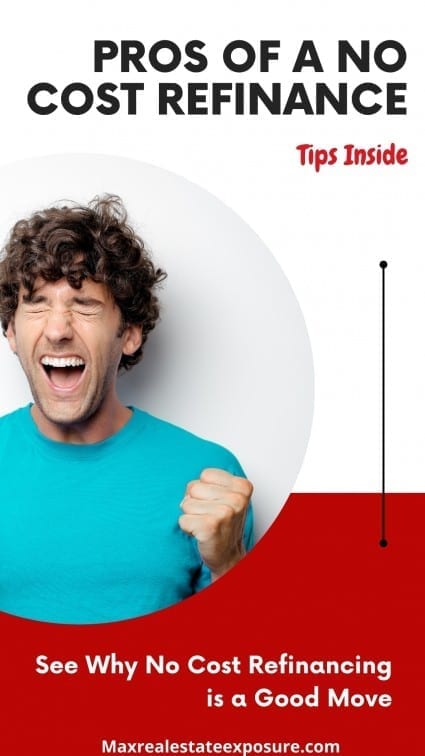 Choosing this way of refinancing is better for some people than others. It might not be your best option if you plan to stay in the home for longer.
Choosing this way of refinancing is better for some people than others. It might not be your best option if you plan to stay in the home for longer.
The longer you stay in the home, the more likely you will pay more interest than you would if you had paid the costs upfront.
However, this type of refinancing will be a good option ahead of other loans, which are typically more costly to borrowers.
It will also be a great choice if it is your only way of refinancing, and you will reduce your interest charges significantly.
When Not Paying the Closing Cost on Refinance Isn’t So Good.
Since you can expect to pay more in the long run when using this type of refinancing, it generally isn’t better if you plan to live in your home for longer.
If you anticipate living in the home for many years, you will likely end up paying quite a lot more for the closing costs than if you had paid them upfront.
Before you commit to this type of refinancing, you must do the calculations to see where you stand.
You can use an online mortgage calculator along with details of interest rates and other charges from your lender. This will help you determine how much no-cost refinancing will add to the total cost of your mortgage.
Should You Choose the No-Closing-Cost Loan Option?
If you don’t have the money to pay closing costs when you refinance, you can expect to pay more for these fees if the lender pays for them.
When you refinance without closing costs, it will increase the costs of the loan over your repayment term with the lender.
If refinancing still gives you significant savings on the mortgage you already had, thanks to a better interest rate and perhaps removing your private mortgage insurance, it won’t matter how long you plan to stay in the home.
When neighborhood property values have increased to the point where you have 20% or more equity in the home, refinancing can help you get rid of your private mortgage insurance and give you a lower interest rate.
If you don’t plan on staying in the home for the entire mortgage term, you could save some money on your expenses with no closing costs and refinance loans. Though, what the right decision is for you will depend on your situation.
You will need to check your paperwork to fully understand the situation and do some calculations to see if refinancing significantly affects your monthly outgoings.
Doing so will allow you to see how much you will pay through increased interest or adding to the home loan amount. And with this information, you can decide which option, if either, is right for you.
Final Thoughts on Refinancing With No Closing Costs
When doing a no-cost refinance, checking with your current lender first is a good idea. The mortgage rate you receive may be better than going elsewhere.
If you can’t get a great deal with your current lender, shop other mortgage companies for the best loan terms.
You may even want to change your principal loan amount, which could be taken care of as part of the refinance. If the spread in interest rates is large enough, you may even be able to increase the loan balance without making the mortgage payments increase that much.
Hopefully, you have enjoyed what you need to know about refinancing with no closing costs.
Other Helpful Mortgage Resources
- Does paying off a mortgage early make sense – see the pros and cons of getting rid of your mortgage before it is due. It makes sense to pay off your mortgage, but in some circumstances, in others, it doesn’t. See some of the considerations.
- Mortgage programs for first-time buyers – when purchasing a house for the first time, deciding which financing program you should choose can be overwhelming. Numerous options could be perfectly acceptable. See some of the best programs for buying your first property.
- Mortgage terms buyers and sellers should know – see mortgage terminology you should know when buying or selling a home.
If you want no-closing costs refinancing and need assistance, reach out. I would be happy to put you in touch with my trusted mortgage broker.
About the author: Bill Gassett, a nationally recognized leader in his field, provided the above Real Estate information about a no-closing cost refinance. Bill can be reached via email at billgassett@remaxexec.com or by phone at 508-625-0191. Bill has helped people move in and out of Metrowest towns for 37+ years.
Are you thinking of selling your home? I am passionate about Real Estate and love sharing my marketing expertise!
I service Real Estate Sales in the following Metrowest MA towns: Ashland, Bellingham, Douglas, Framingham, Franklin, Grafton, Holliston, Hopkinton, Hopedale, Medway, Mendon, Milford, Millbury, Millville, Natick, Northborough, Northbridge, Shrewsbury, Southborough, Sutton, Wayland, Westborough, Whitinsville, Worcester, Upton, and Uxbridge MA.

